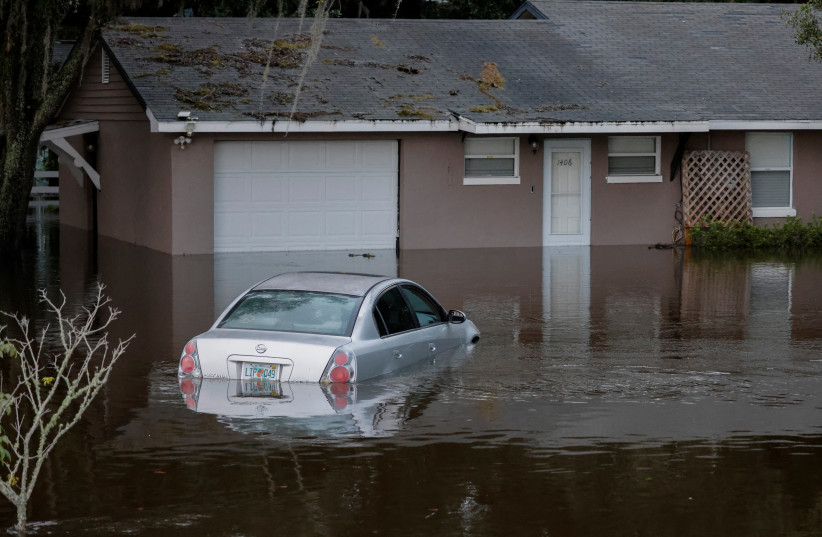Fueled by environmental conditions that beget increasingly severe storms – with climate change as a root contributor – the US Atlantic Coast is becoming a breeding ground for rapidly intensifying hurricanes, a new study has found.
The Department of Energy study, published in the peer-reviewed scientific journal Geophysical Research Letters, found that hurricanes are growing wetter and strengthening faster due to warming water temperatures – a trend researchers say is likely to continue.
“Our findings have profound implications for coastal residents, and decision- and policy-makers,” said climate scientist and study co-author Karthik Balaguru. “And this isn’t specific only to the Atlantic. It’s happening in several prominent coastal regions across the world.”
Hurricanes growing stronger in intensity
The recent hurricane to make landfall in Florida is among the strongest and most damaging in US history, though it is also part of a troubling trend – the increase in hurricane strength.

Over warmer land, air pressure is lower, whereas it is relatively higher over cooler land or water. Higher-pressure air can blow inland toward those warmer, lower-pressure areas. Earth’s rotation guides these winds in a cyclonic, twisting direction, causing what scientists call “vorticity” – a spinning motion of air that happens in the lowest level of Earth’s atmosphere. This twisting motion pulls humid air near Earth’s surface up into the atmosphere.
Hurricanes are often described as “heat engines,” continually sucking up warm, moist air and converting its energy into damaging winds. That energy comes from the condensation of water vapor. When water vapor condenses, it releases energy in the form of heat. As moist air rises inside the hurricane’s core and cools toward the top, water vapor condenses and emits heat, thus warming the surrounding air and causing it to ascend further – a process which invigorates the storm.
“The nearshore environment has absolutely become more favorable for hurricanes near the Atlantic Coast, and that’s very consistent with the rising hurricane intensification we’ve observed in the region.”
Karthik Balaguru
“The nearshore environment has absolutely become more favorable for hurricanes near the Atlantic Coast,” said Balaguru, “and that’s very consistent with the rising hurricane intensification we’ve observed in the region.”
What role does climate change play?
Using models that depict what consequences would follow in a fossil fuel-based world economy, the researchers found that the same conditions will continue to become exacerbated, bringing even greater chances of wetter, faster-developing storms throughout the 21st century.
“The spatial patterns of change we’re seeing are consistent across models,” he said, “and that means that what we have seen is likely related to climate change. Natural variability does play a role, but to a lesser degree.”
These increasingly stark land-sea temperature differences could arise in other coastal areas. Though their research only focused on the Northern Hemisphere, one would expect the same thing to happen on coastlines of the Southern Hemisphere, the climate scientist explained.
The land-sea temperature differences also have other implications. “For example, they have been associated with increasing aridity over land and changing seasonality of precipitation in some regions,” said atmospheric scientist and study co-author Ruby Leung. “Considering the land-sea warming contrast, this study adds a new and important consequence: changes to hurricane behavior in coastal regions that could affect large populations around the world.”
